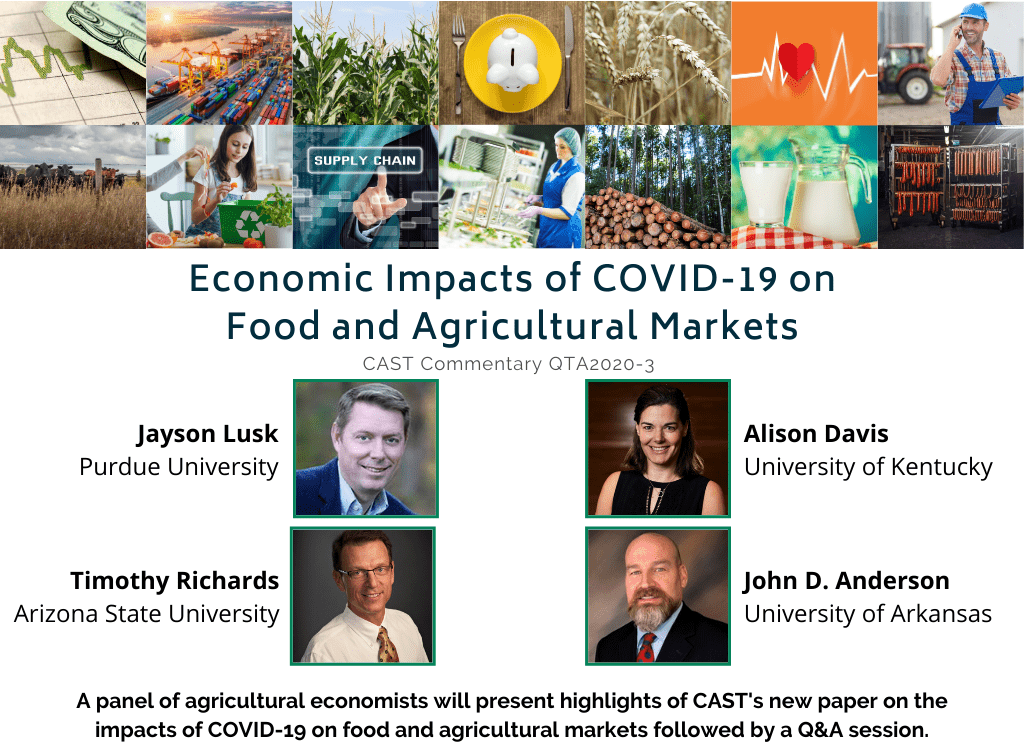CAST to Release Comprehensive Paper on FIFRA and ESA at the CropLife & RISE Regulatory Conference
On June 29, the Council for Agricultural Science and Technology (CAST) and the Agricultural & Applied Economics Association (AAEA) hosted a webinar on the new commentary Economic Impacts of COVID-19 on Food and Agricultural Markets. Approximately 670 people viewed the webinar. Kent Schescke, CAST Executive Vice President, started off the webinar with an introduction of NC-FAR, USDA REE Agencies, AAEA, and CAST.
Jayson Lusk from Purdue University gave a timeline of the disruptive events including shipping and price shocks seen in wholesale areas. He covered foot traffic in supermarkets and restaurants and mentioned how vulnerable processors are. Lusk gave an overview of the meat packing plants and other topics in the paper.

Tim Richards from Arizona State University covered the fruit and vegetable supply chain, why it wasn’t resilient as hoped, and how to improve flexibility as needed. Richards mentioned the shift to online sales and five key implications of online shopping. He discussed labor in the supply chain and how H-2A workers had a work permit for a maximum of ten months.
Alison Davis of the University of Kentucky discussed rural health. There was a rural health crisis even before COVID-19—revenues were decreasing and rural hospitals were closing. A shortage of medical workers, an opioid crisis problem, and a lack of beds also affects the situation. Telehealth use is positive, but high speed internet presents a challenge and hospitals could be bought up. Davis says there’s been a reduction of tax revenue, and even though the CARES Act is helpful, it is considered a band aid.
John Anderson of the University of Arkansas covered commodity markets, mostly focusing on reduced demands of row crops. Since the pandemic started, energy prices have been affected (e.g. ethanol shutdown), with more effects coming. The livestock and poultry market has seen effects based on the supply chain—changes of products going to restaurants and grocery stores. Anderson mentioned that in the forestry and wood industry, there has been a pulpwood surge, which is used to make boxes and toilet paper. In the long term that industry might suffer. He says there has been a $20 billion loss in farm income and there should be outreach priorities regarding policy analysis, farm finance, supply chain, and community resilience.
The webinar finished with a short Q&A session. All of the questions asked were sent to the panelists and will be answered by them and made available at a later date. Here you can find the recorded webinar, publication, Ag quickCAST, and the student study guide.
Your donation to CAST helps support the CAST mission of communicating science to meet the challenge of producing enough food, fiber and fuel for a growing population. Every gift, no matter the size, is appreciated.